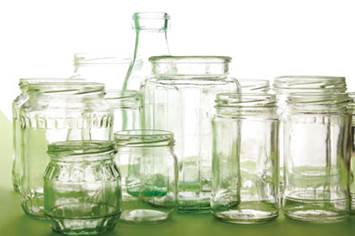
Jar

Glass manufacture is one of the reasons sandy beaches are disappearing. Due to the high demand for sand, the planet’s reserves are being threatened. Three-quarters of the world’s beaches are in decline and bound to disappear as victims of erosion or sand smuggling. Sand is the source of silicon dioxide, a mineral found in an astounding variety of products we use on a daily basis - including glass.
Read about and watch the Sand Wars movie which documents the disappearance of beaches around the world.
Jam, sauce, pickle jars through to preserving, Agee jars.
It takes just four ingredients to make glass - silica sand, soda ash, limestone and recycled glass (or cullet). These four minerals are heated in a furnace to temperatures of 1200-1500 degrees. The resulting melted mixture is then formed into bottles and jars, cooled and ready for use.
The energy saved by recycling one glass bottle will: power a 100watt light bulb for almost one hour; power a computer for 25 minutes; power a colour TV for 20 minutes; or power a washing machine for 10 minutes!
Glass containers are 100 percent recycable, can be recycled endlessly. Recovered glass is used as one of the four main ingredients to make new glass.
Every tonne of glass that is recycled results in one tonne of raw materials saved to process new glass including - 1,300 pounds of sand, 410 pounds of soda ash and 380 pounds of limestone.
Read more Glass Facts from the good people at Love Southland.
Reduce the need to buy new jars by refilling with your own home-made or bulk-bin supplies.
The ReUse Academy at the WhEB does a great trade through its Jar Bar.
Take your surplus jars and bottles in, or visit and take some away for your bottling/preserving or to decorate (for a donation).
Clean glass jars can be recycled at the Whanganui Resource Recovery Centre.
Wrap carefully if broken, and dispose to landfill as a last option.